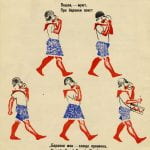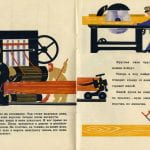Events of the 1920s:
The decade began with the continuation of the Russian Civil War. Though the Soviet Union would not officially become a nation until late 1922, by mid-1921 the Red Army, led by Vladimir Lenin, had functionally taken power. In order to stabilize the economy of the young nation the Soviet government, instituted the New Economic Policy (NEP) in 1921. The NEP created a temporary market-economy that allowed for both private and state-controlled businesses to compete while the infrastructure was being developed for a socialist economy (Freeze, 2009, pp. 308-309). Following Lenin’s death in 1924, Joseph Stalin and Leon Trotsky vied for authoritative power, and the ability to mold the ideology of the party, with Stalin emerging as the eventual victor. Under Stalin, the NEP remained in effect until 1928, at which point the party began to push for more state control over the economy, leading to its replacement, the First Five-Year Plan. The primary goals of the First Five-Year Plan were to rapidly increase industrialization of the Soviet Union, and to collectivize the country’s agricultural sector (Freeze, 2009, pp. 344).
Art of the 1920s:
The 1920s saw the Soviet Union undergo a cultural revolution that pushed for gender equality, access to education, and the expanded production and accessibility of both written and visual arts (Freeze, 2009, pp. 330-331). During the 1920s, art was viewed as a powerful tool for molding the minds and behavior of the Soviet citizenry into that of the idealized communist participant (Steiner, 1999, pp. 6). While there was no state-controlled art organization, independent communities, namely the Russian Association of Proletarian Writers (RAPP), became an increasingly powerful and influential force in the cultural sphere (Clark et al., 2007, pp. 52). In turn, the old-Russian and the new-Soviet intelligentsia found themselves embroiled in a culture war (Clark et al., 2007, pp. 32). The 1925 Central Committee resolution on literature preached about “free competition”, but at the same time made clear the party’s intent to foster a “Soviet culture” (Davies & Harris, 2014, pp. 234). Towards the end of the decade Stalin preached for the necessity of literacy and socialist culture as mechanisms for improving Soviet agricultural and technological proficiency (Clark et al., 2007, pp. 63-64).











